At the beginning of the 2016/17 season, Portuguese manager Vítor Pereira was sacked as the head coach of Fenerbahçe with the case being taken to the Court of Arbitration for Sport.
In a statement released by the club, Fenerbahçe’s board cited a change in tactics—a switch to a back three—as one of the overarching factors that led to his sacking:
“At the start of the season, our board talked with Pereira about planning for the season and the tactical system, then we transferred players with that plan."
“But Pereira changed the system, he started the Monaco match [in the Champions League qualifying round in 2016] with a 3-5-2 system.”
In the following years, the former Porto manager moved to 1860 München, a tenure that unfortunately ended in relegation from 2 Bundesliga. Pereira then switched to Shanghai SIPG for the next three and a half seasons, winning the Chinese Super League in his debut campaign.
The 53-year-old parted ways with the Chinese club back in December of last year and had been out of work until Turkish giants Fenerbahçe came calling once more. On July 2 of this past year, Pereira returned to Sarı Kanaryalar.
Immediately, the Portuguese head coach switched to a back three – something rarely seen by one of Turkey’s most successful clubs – and has been successful thus far.
This article will be a tactical analysis of Fenerbahçe under their new manager. It will be an analysis of the tactics used by the experienced coach with a particular focus on his use of the back three in each game phase.
Vítor Pereira Formation and personnel
So far, Pereira has won all of his competitive games in charge, as of writing, and Fenerbahçe are joint top of the Super Lig table four games into the campaign. They have conceded just a single goal in the league as of yet too.
One of the main reasons for this is Pereira’s tactical set-up, as the manager has reverted to the back three which found him in a world of trouble during his first stint in charge, back in 2016.
Fenerbahçe have deployed a 3-4-2-1/3-4-3 in every game this season but Pereira’s 3-4-2-1 is very attacking. The two can only be distinguished by the positioning of the wingers. At times, the wingers will stay wider creating a 3-4-3 but a lot of the time they push inside and play closer to the centre-forward which creates a narrow front three.
Usually, Pereira deploys more of a 3-4-2-1 when Mesut Özil is on the pitch due to the former Arsenal and Real Madrid man’s innate ability to play between the lines.
The back three in this system has been rotated quite a lot this season so far, as has the entire starting XI, but the following image depicts how Fenerbahçe tend to set up in their 3-4-2-1.
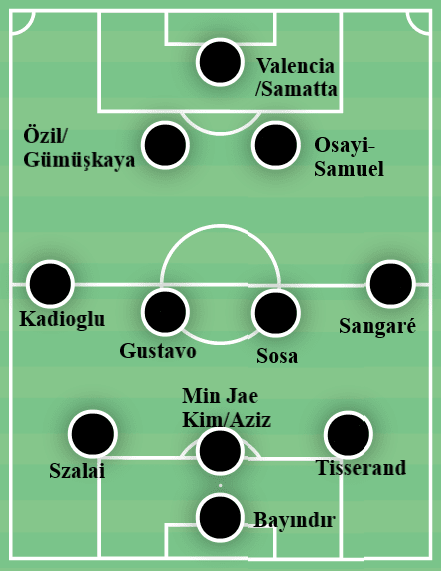
Fenerbahçe are a possession-based side under the new head coach – averaging 57.87 percent ball possession per 90 so far. So, it is very important to Pereira that his three starting centre-backs are comfortable on the ball and can progress play to higher areas of the pitch.
He also applies the concept of overlapping centre-backs to his Fenerbahçe team. The wide central defenders, usually Attila Szalai on the left and Marcel Tisserand on the right, are tasked with getting forward quite a lot.
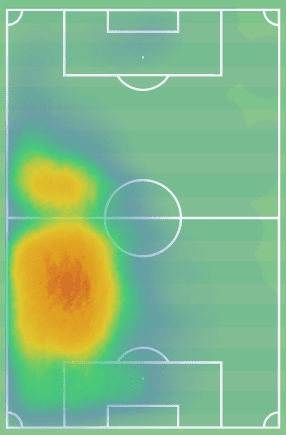
This heat map belongs to Szalai from all competitive games so far in the 2021/22 campaign at Fenerbahçe. There is an extremely high amount of activity in the halfspaces and on the flanks, as well as in very advanced areas which shows how attacking Pereira wants his centre-backs to be.
Both men are very capable of playing in more advanced positions already as fullbacks or wide midfielders so this is the perfect role for the pair, while Min Jae Kim is a very good ball progressor from the central areas.
Vítor Pereira Build-up phase
Since Fenerbahçe are a possession-oriented side, Pereira wants his players to start each attack from the goalkeeper and the centre-backs.
Often when a team utilises three central defenders, one of the wide centre-backs will move wide and take up an auxiliary fullback position with the wingback on this side pushing high.
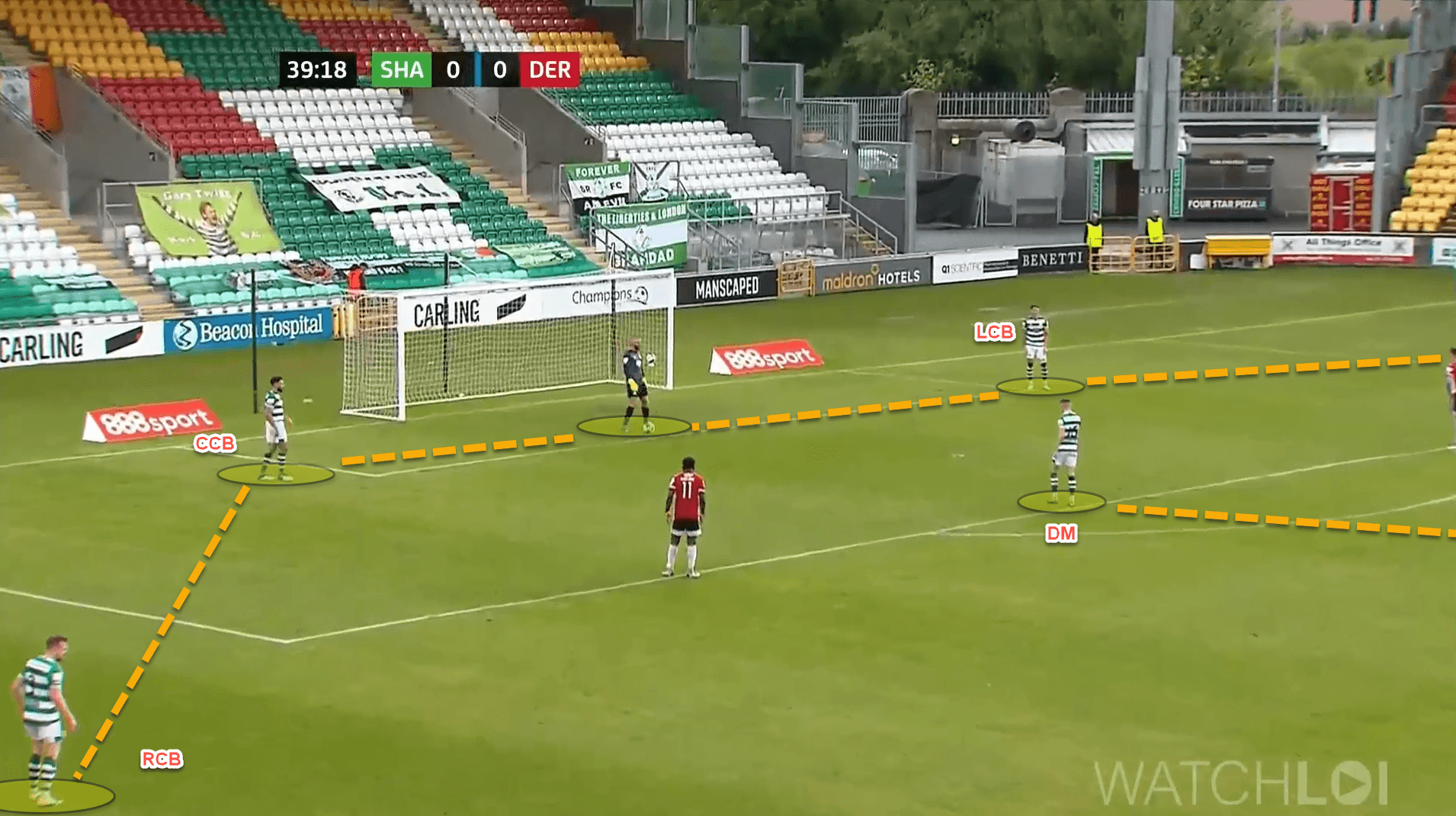
In this example, Shamrock Rovers’ right centre-back has moved over to the flank while the central centre-back and left centre-back split wide to allow the goalkeeper to play in the first line when playing out from the back.
However, Fenerbahçe don’t do this under Pereira. Instead, the central centre-back will push up outside the penalty area, occupying the position that usually a single pivot takes up during this phase, which can also be seen in Shamrock Rovers’ structure in the previous picture.
The two wide centre-backs split very wide and allow the goalkeeper to act as the central passing option.
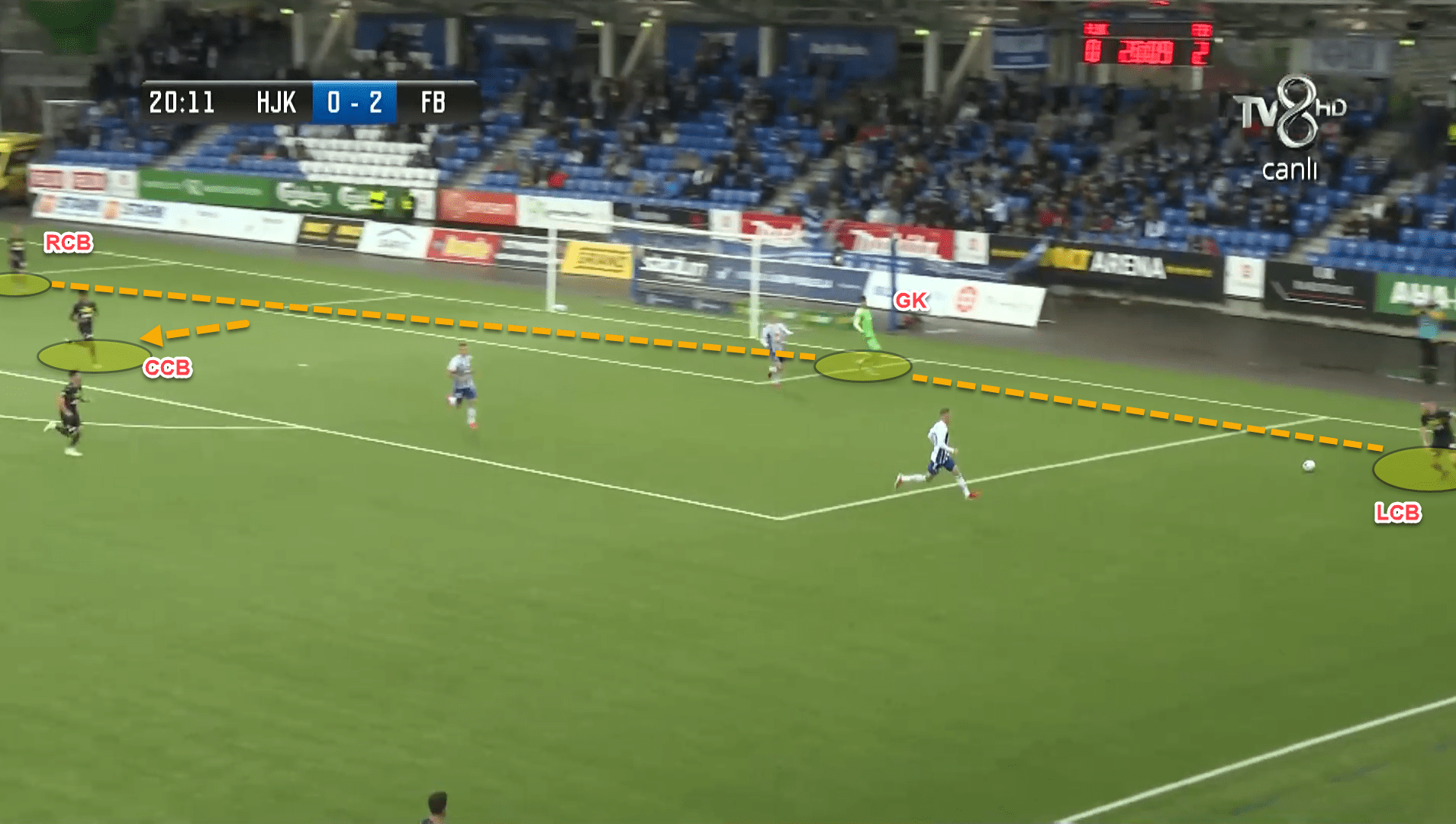
When the central centre-back pushes up to the edge of the area, he forms a double-pivot of sorts with the deepest central midfielder of the actual two-man midfield, while the other pushes up behind the opposition’s midfield line.
None of the three players stay on the same horizontal or vertical line which allows for some nice and clean progression upfield through the central areas.
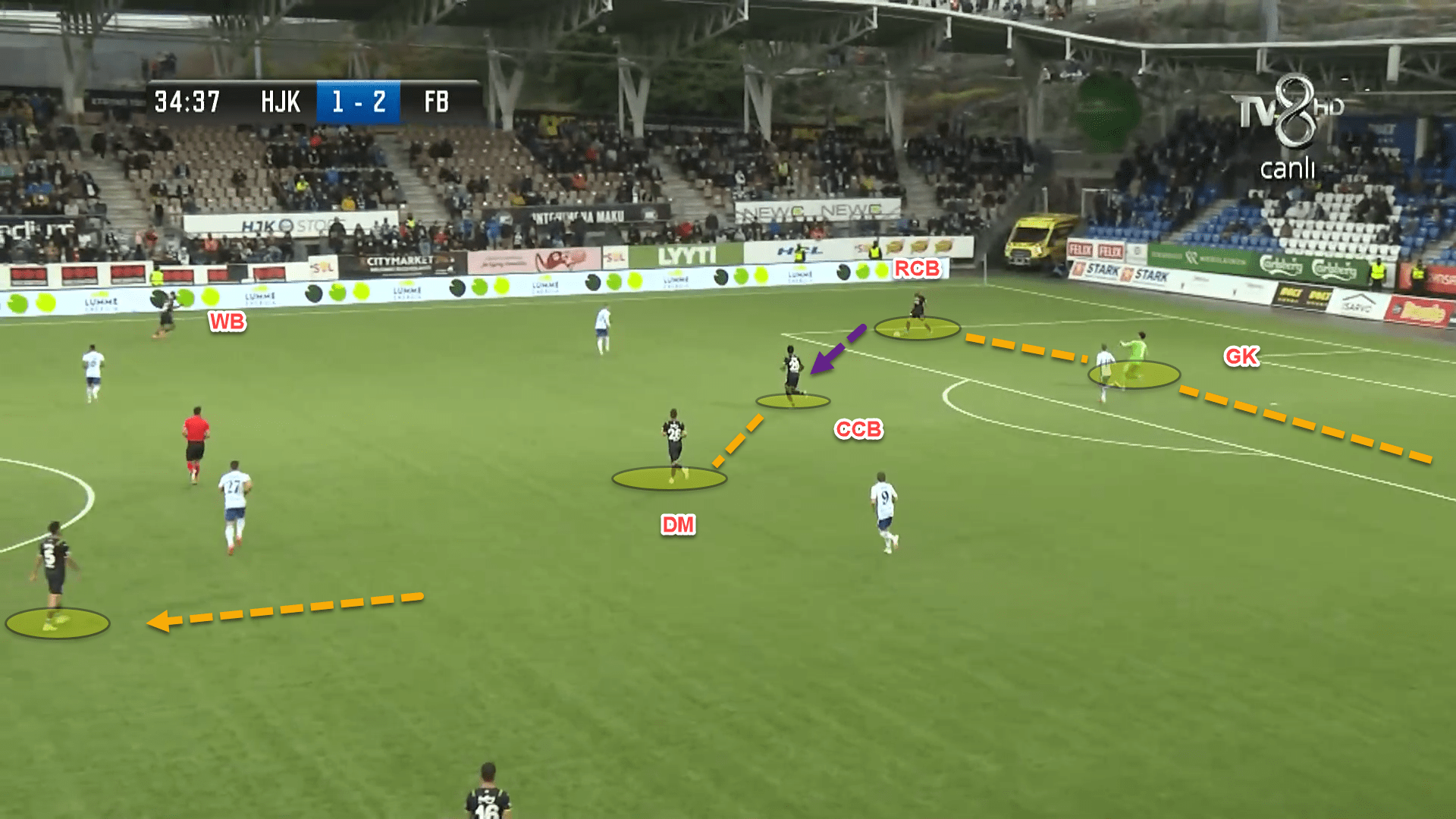
To reiterate a previous point once more, Pereira needs his central centre-back to be comfortable in possession for this very reason.
This player will quite often be tasked with dropping into space behind the opposition’s first line of pressure and receiving on the half-turn to orientate himself into a body position where he can drive or play forward with the ball.
Vítor Pereira Progression phase and attacking third
When Fenerbahçe manage to work the ball further up the pitch and reach the middle third, the centre-backs become important once more.
When a team has the ball in the middle third in a structured positional attack against an opponent’s defensive block, it is known as the progression phase.
In this phase, Fenerbahçe’s centre-backs split very wide to cover the width of the pitch. This is to ensure that players on the flanks have a backwards passing option to recycle possession, but it is also allowing the Turkish giants to have a defending player in the wide areas during moments of transition when the ball is lost.
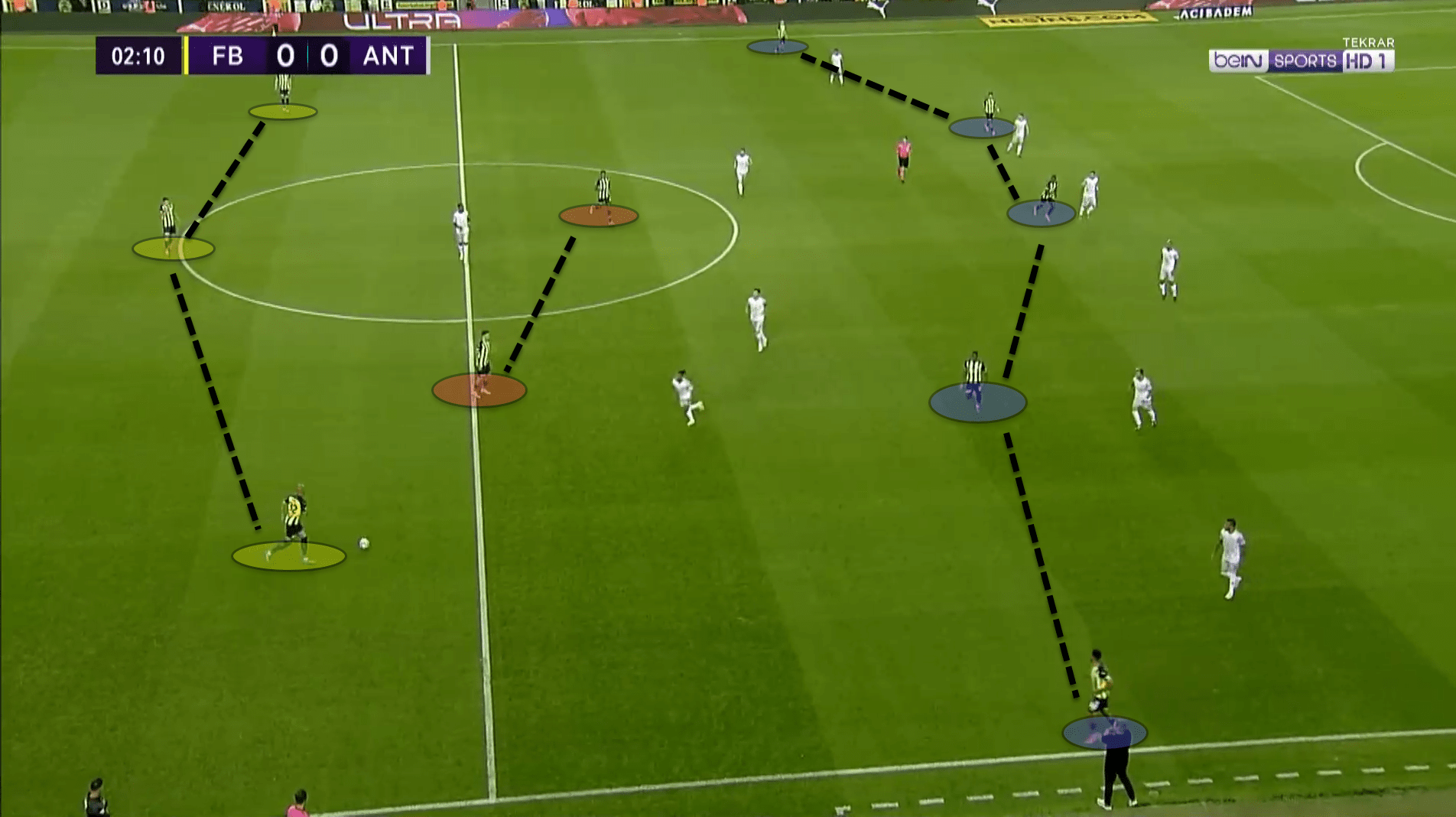
This is how Pereira positions his three centre-backs within the team’s positional 3-2-5 shape in the progression phase.
Apart from taking up positions to nullify any threat of a counterattack and maintain a constant state of alertness and focus, centre-backs are rather purposeless when a team has the ball in the final third.
This mainly applies to teams that utilise two central defenders but is certainly applicable to three-man backlines also.
However, Pereira sees his wide defenders as flexible and an integral part of his team’s attacking play in the final third.
Despite playing with wingers and wingbacks, the Portuguese head coach instructs his wide centre-backs to push high on the flanks and create wide overloads when an opponent is sitting in a deeper defensive block.
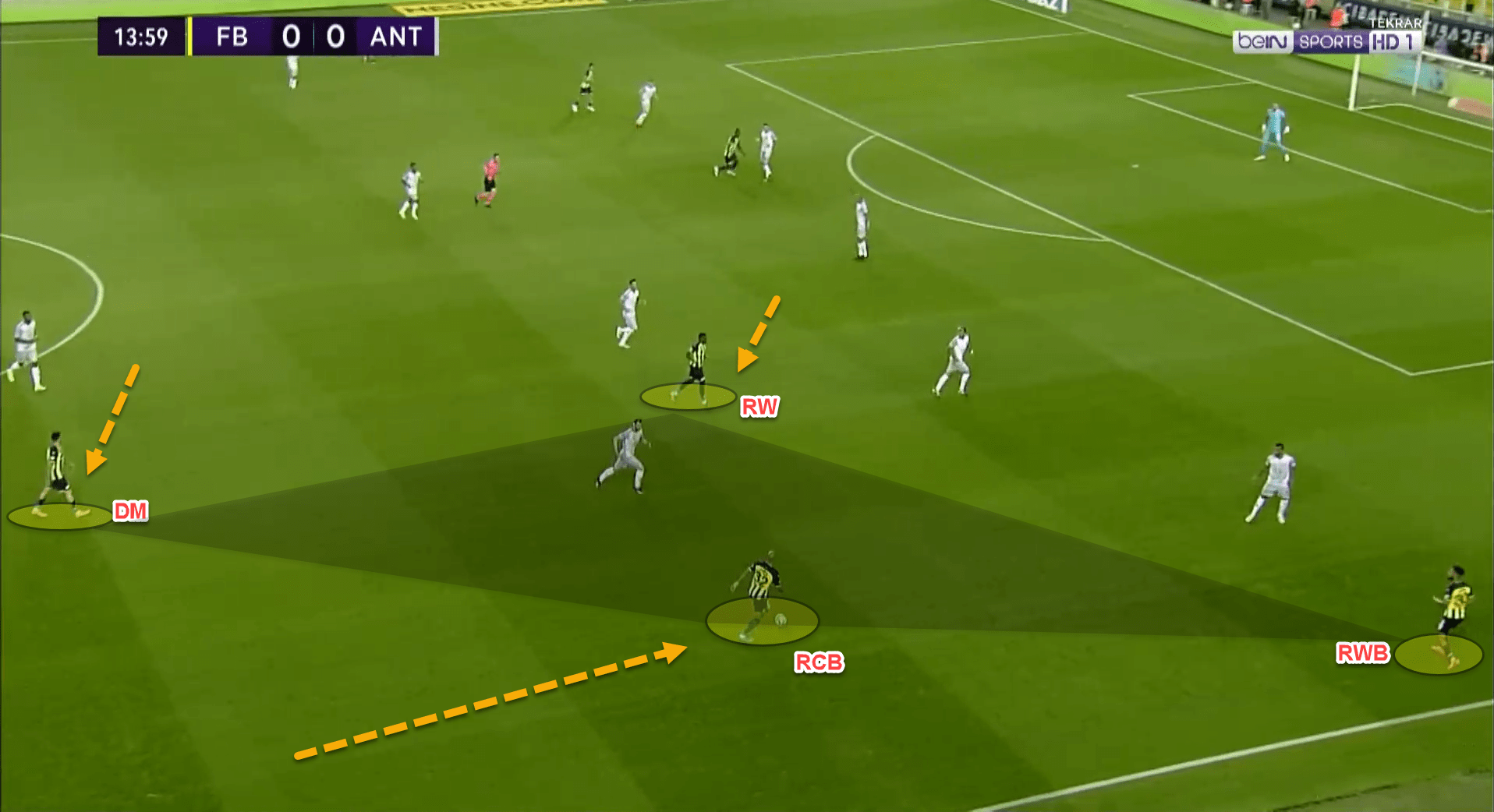
In this sense, they play more as fullbacks than centre-backs and often like to make overlapping runs past the wingback or winger, depending on the situation. This is a concept that has become quite popular over the past few seasons, particularly since it was first brought to the Premier League a few seasons back with Chris Wilder’s Sheffield United.
Of course, a centre-back cannot venture forward as such without defensive cover otherwise he/she will be leaving an entire flank exposed and ready to be exploited by the opponent on the break.
When Fenerbahçe’s wide defenders venture forward on the flanks or in the halfspaces, the ball-near defensive midfielder will drop back in a deeper position in the space left bare. In addition, the two other centre-backs push across to reduce the space.
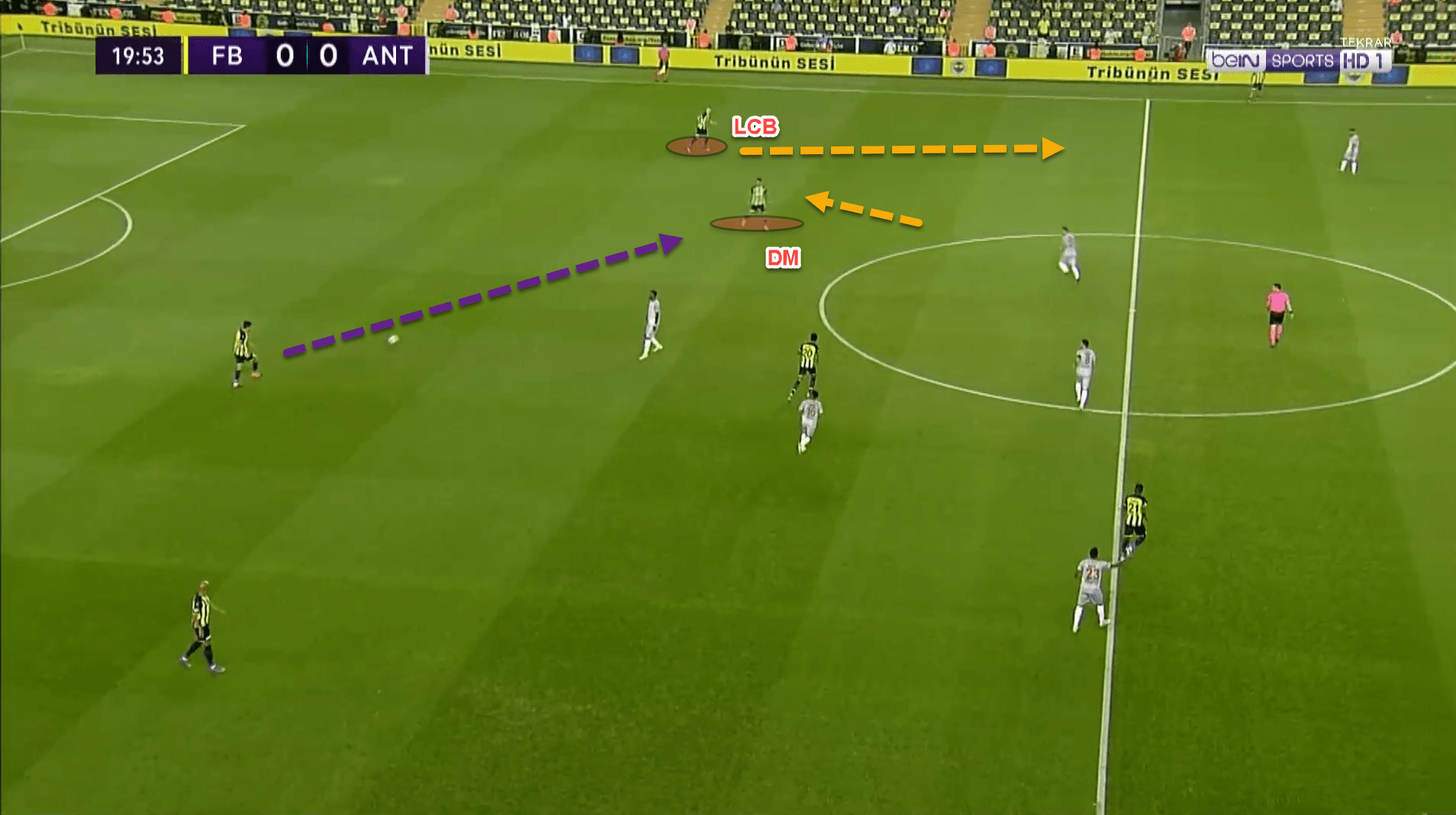
This rotation is extremely important for the structure and balance of the team. The wide centre-back cannot venture forward without this cover or else they will be leaving a plethora of space to be exploited.
The following scene depicts one of the worst situations Fenerbahçe can find themselves in when a centre-back ventures forward on the flanks to aid creation in the final third but leaves the structure unbalanced.
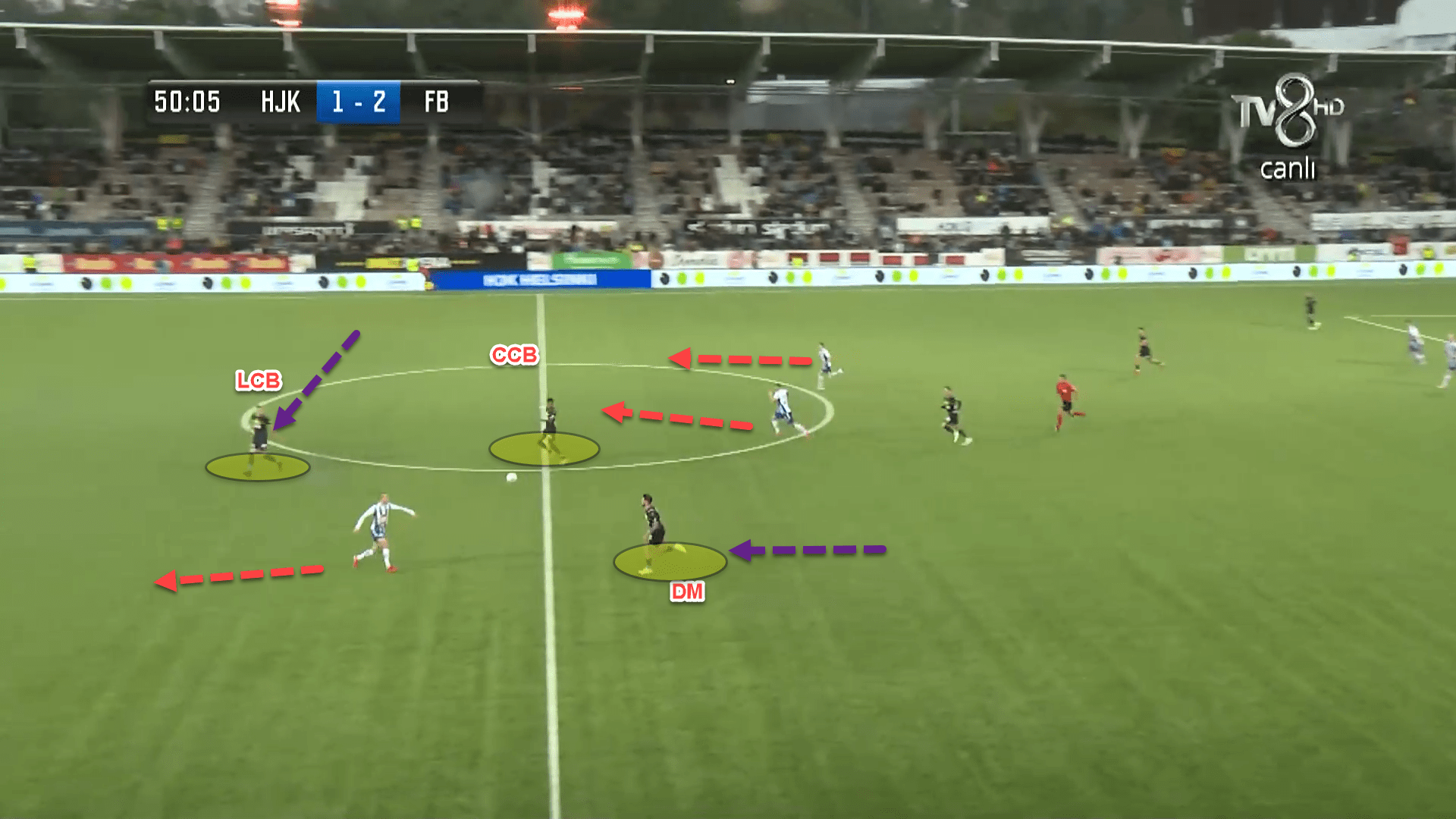
Here, the Yellow Canaries have lost the ball and are in defensive transition mode. However, the right centre-back is high up the pitch and they are not set up properly to deal with HJK Helsinki’s counterattack.
The nearest defensive midfielder has not dropped back to cover for the right central defender and the left centre-back has had to come across to reach the ball-carrier, leaving space behind himself to be exploited by two runners from the opposition.
Although trying to use centre-backs in the final third is a productive way of creating wide overloads, it is pointless if it comes at the detriment of the team on the break and can prove more dangerous than beneficial.
While there are some lackadaisical moments, the players are still adapting to Pereira’s principles of play in possession and there are some teething problems that will be ironed out with consistent practice.
It can prove to be an extremely beneficial attacking weapon and since the wide centre-backs used by Pereira are comfortable playing in more attacking positions anyway, they provide an extra man that can put high-quality crosses into the box.
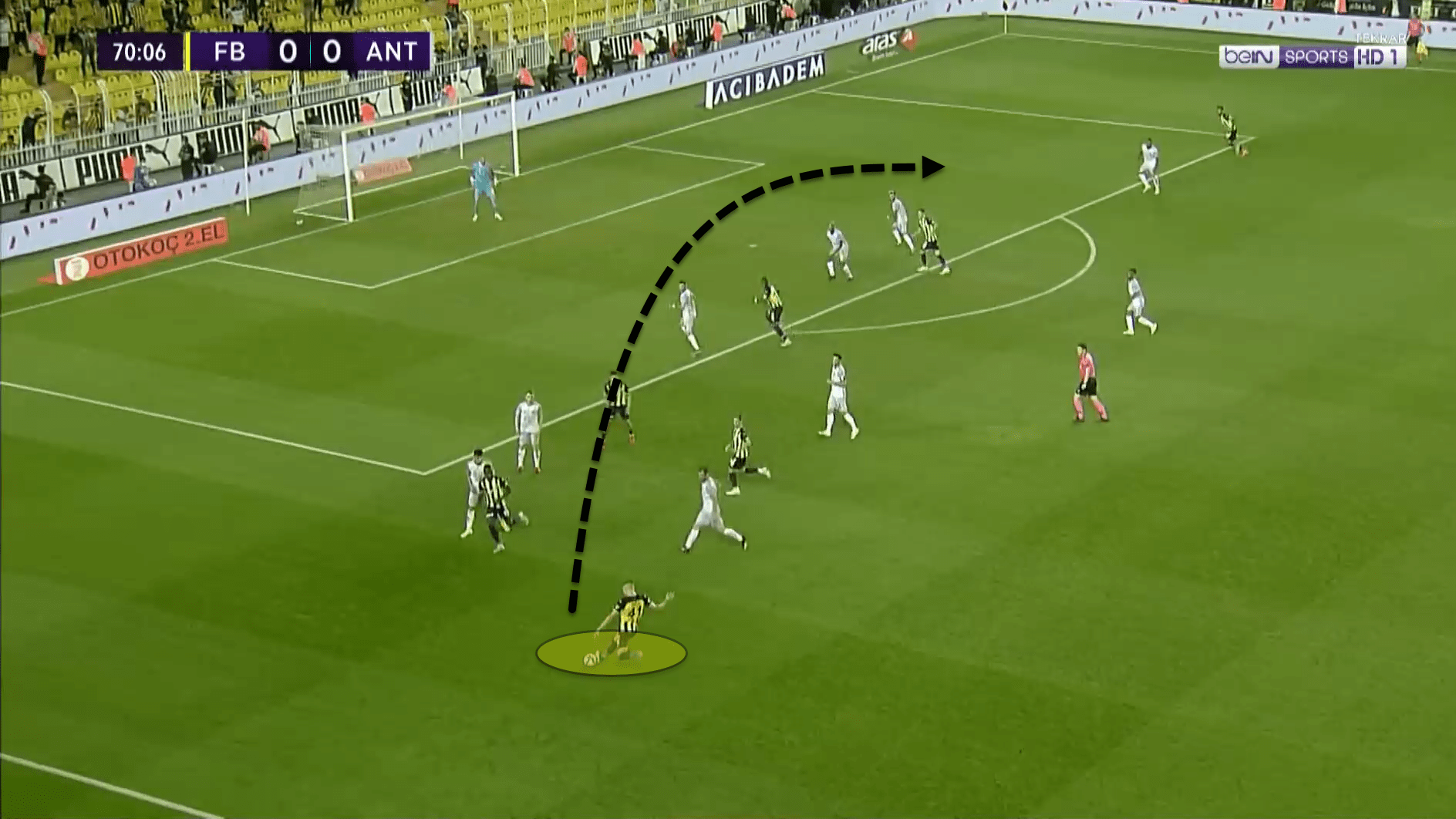
Vítor Pereira Defensive phases
When sitting in a low defensive block, Fenerbahçe’s defensive shape switches to a 5-4-1 which is very compact between the lines.
The centre-backs and midfield line must work in unison to prevent the opposition’s advanced players from having time and space between the lines. When an opponent does manage to receive the ball in this area of Fenerbahçe’s defensive block, the centre-backs come out and close down aggressively to either win the ball back or else to force the player back outside.
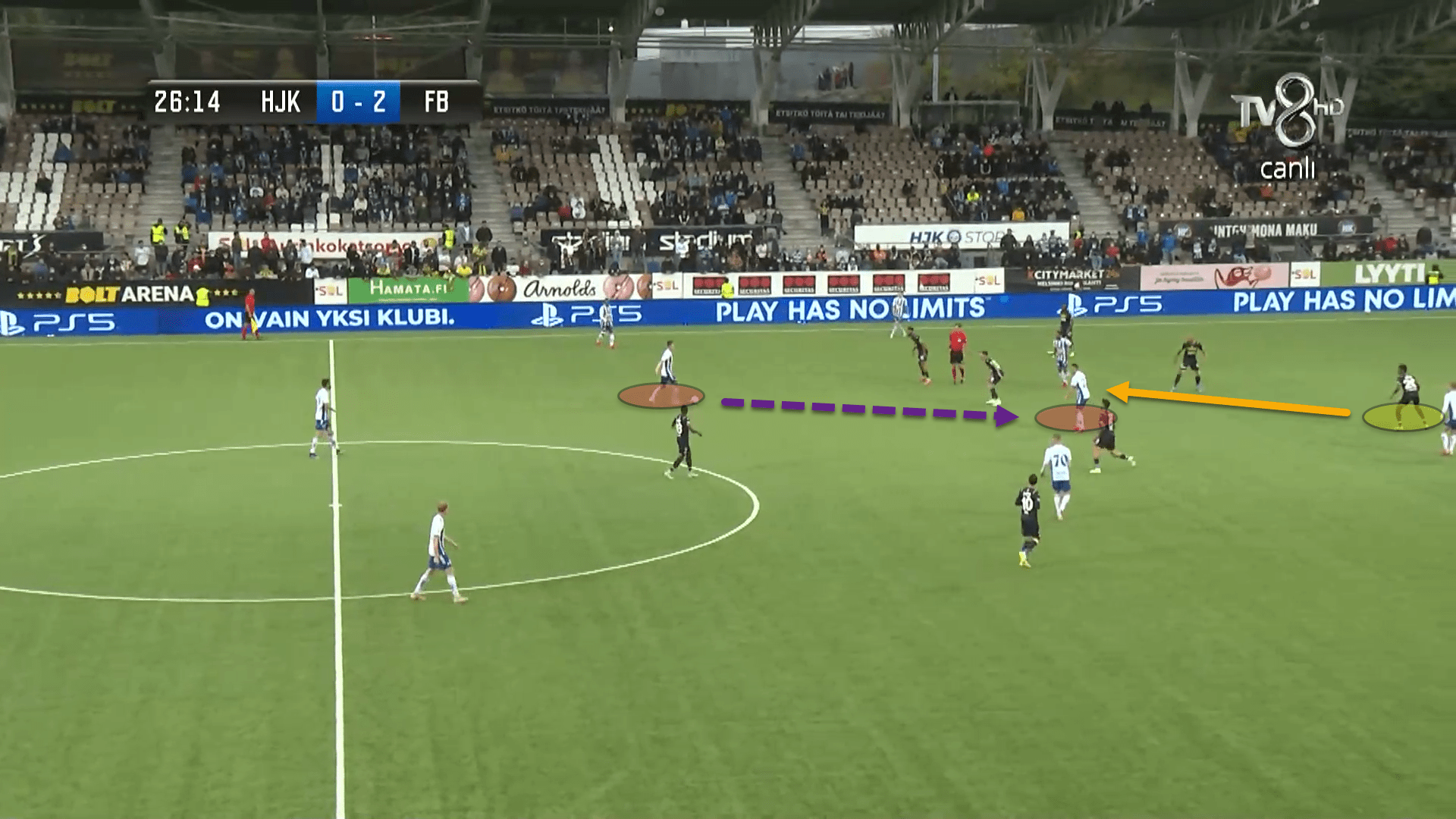
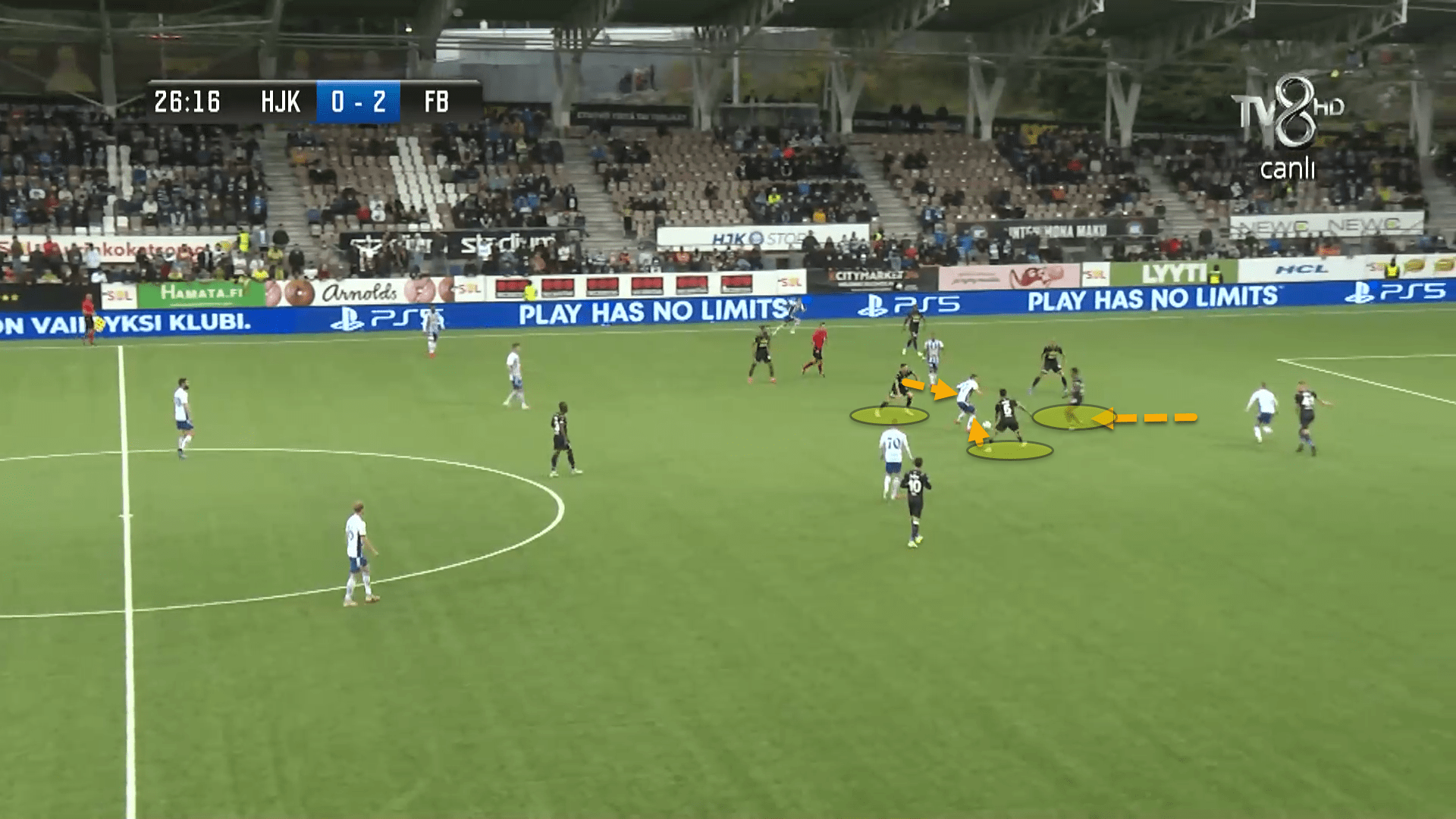
Here, the Helsinki player has received the ball between the lines and Fenerbahçe’s central defender has jumped on him immediately to prevent him from turning on the ball, while the defensive midfielders are pressing him also to regain possession.
The keyword for describing the three centre-backs’ roles out of possession is aggression. Pereira wants them to be aggressive in closing down attacking players and aggressive in closing down space.
Pereira instructs his team to press high when their opponents are playing out from the back. The Turkish team pushes their double-pivot very high too, using a man-oriented system.
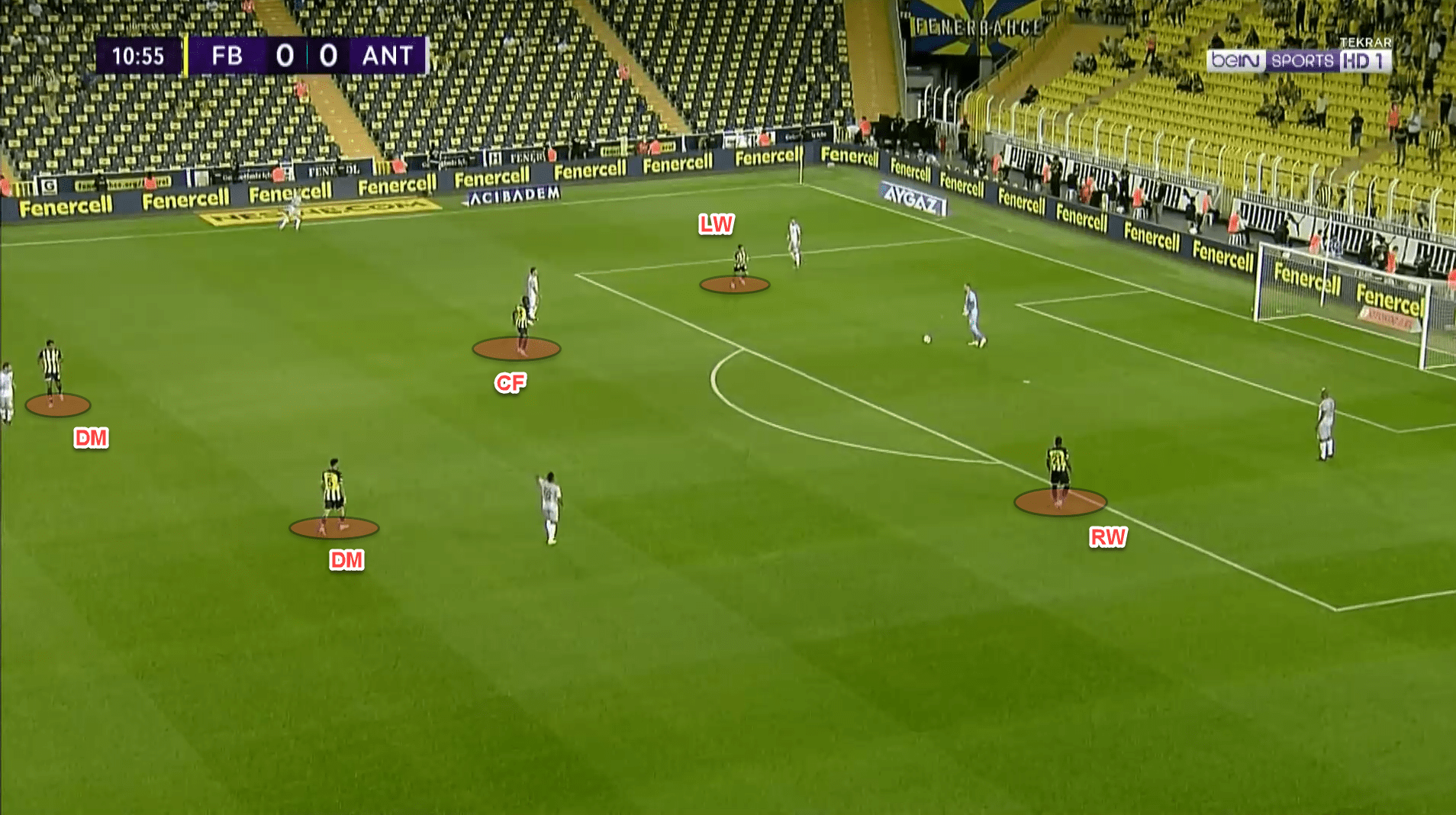
The wingbacks also push rather high and mark the opposition’s fullbacks because Fenerbahçe’s wingers are very narrow during the high-pressing phase. The wingers are tasked with pressing the opponent’s centre-backs and goalkeeper whilst the centre-forward drops off onto the deepest pivot player.
The press can be very successful and so far this season, the Yellow Canaries have boasted a Passes Allowed Per Defensive Action per 90 (PPDA) of just 8.44.
However, the main issue with the pressing structure is that it often leaves the back three exposed and isolated in 1v1 situations against an opponent’s forwards. This is where aggression comes into play once more.
Pereira wants his centre-backs to be comfortable in 1v1 duels, which they generally are, and the defenders cannot allow any of the opposition’s forwards to have time on the ball.
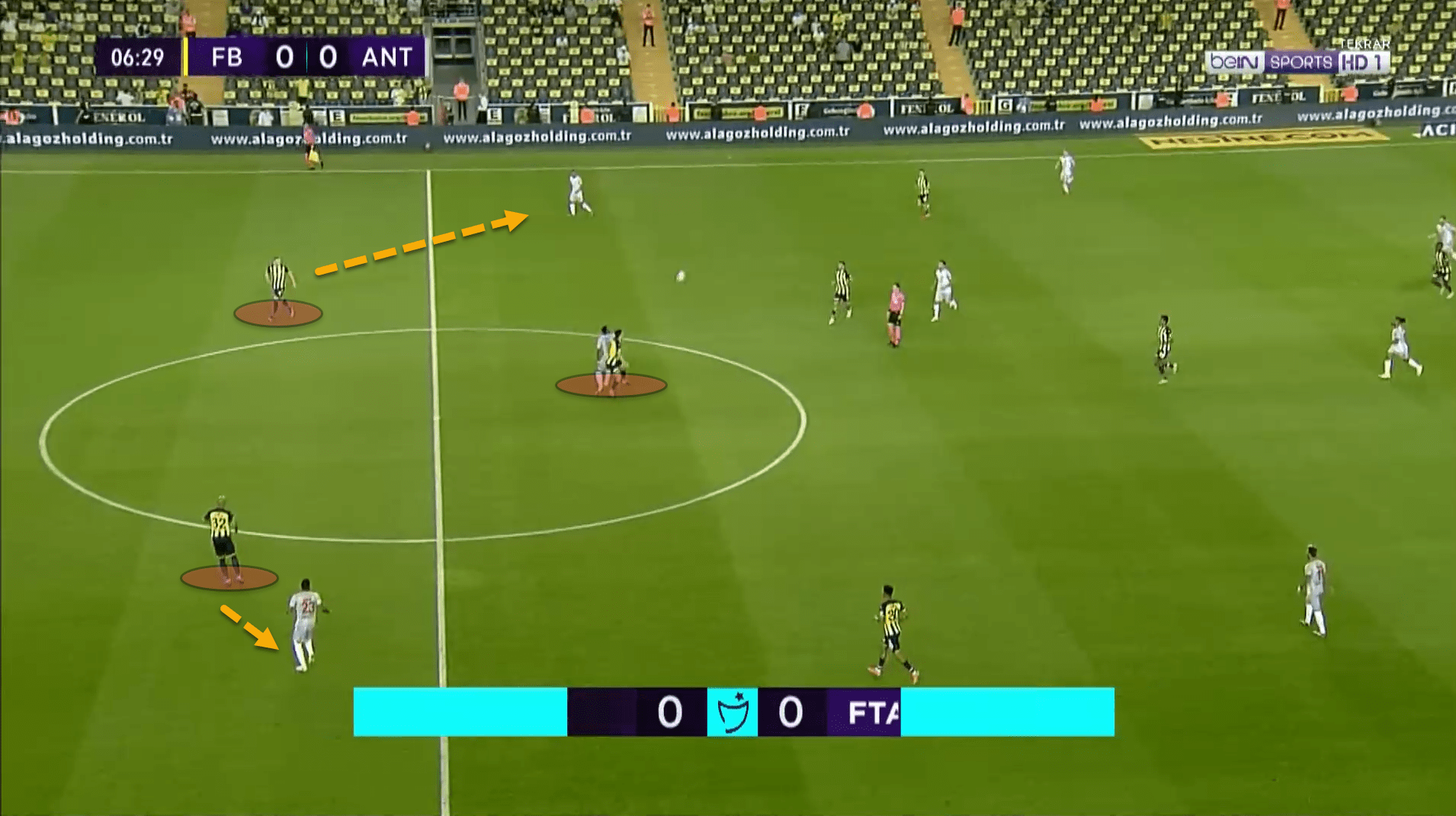
Finally, regarding defensive transitions, once again, Pereira wants to see aggression from his defenders, particularly his wide centre-backs when they bomb forward.
When a wide defender is overlapping in the final third and an attack breaks down, the player does not panic and drop off immediately to make up the ground and get back to his defensive partners.
As spoken about previously in this article, providing the nearest defensive midfielder has covered for the centre-back that bombs on, they should be able to remain high up the pitch and help Fenerbahçe to counter-press.
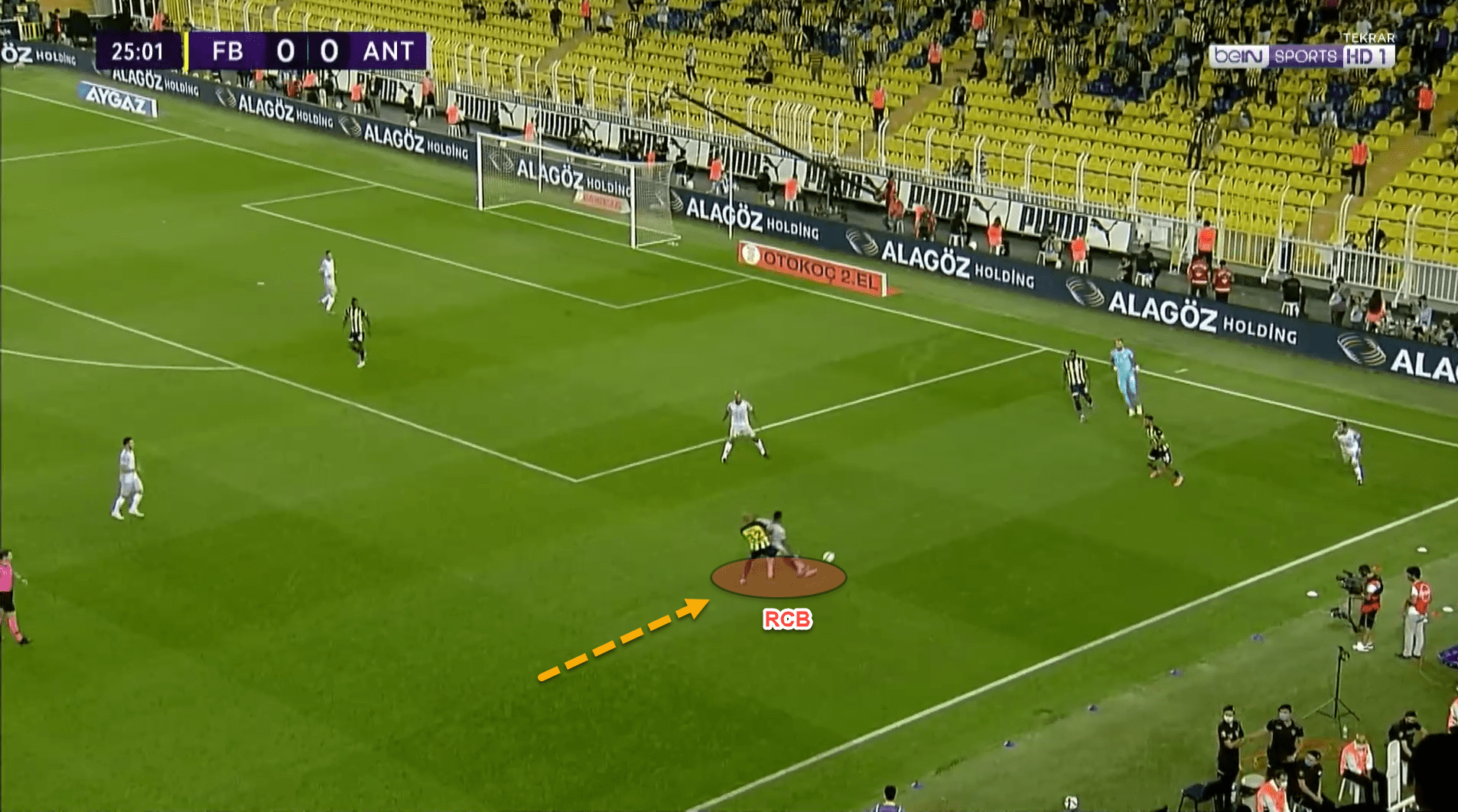
In this image, Fenerbahçe have just lost possession of the ball but managed to regain it when the right centre-back, Marcel Tisserand, pushed up and helped the rest of the forward players to counter-press.
Subsequently, Pereira’s side managed to score from nicking the ball here and eventually shooting into an empty net, but it was controversially chalked off by the referee because Tisserand was deemed too aggressive in his counter-pressing challenge.
Tisserand’s defensive duel map from a recent game against Altay backs up the point of the wide defenders applying pressure in high areas of the pitch.
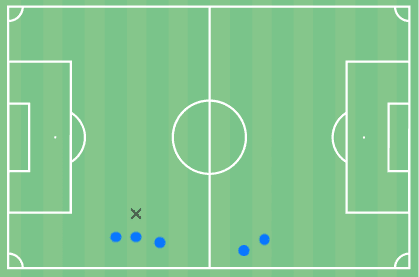
This can be a very efficient way of regaining the ball in higher areas as there is an extra man that would never normally be there.
Conclusion
As far as teams that utilise a back three in and out of possession go, Fenerbahçe are certainly towards the more attacking side of the spectrum and are undoubtedly one of the most exciting teams to watch from a tactical perspective.
Pereira has done a really good job so far and the Yellow Canaries are expected to be a lot closer to the top of the table at the end of the season than in the previous campaign.

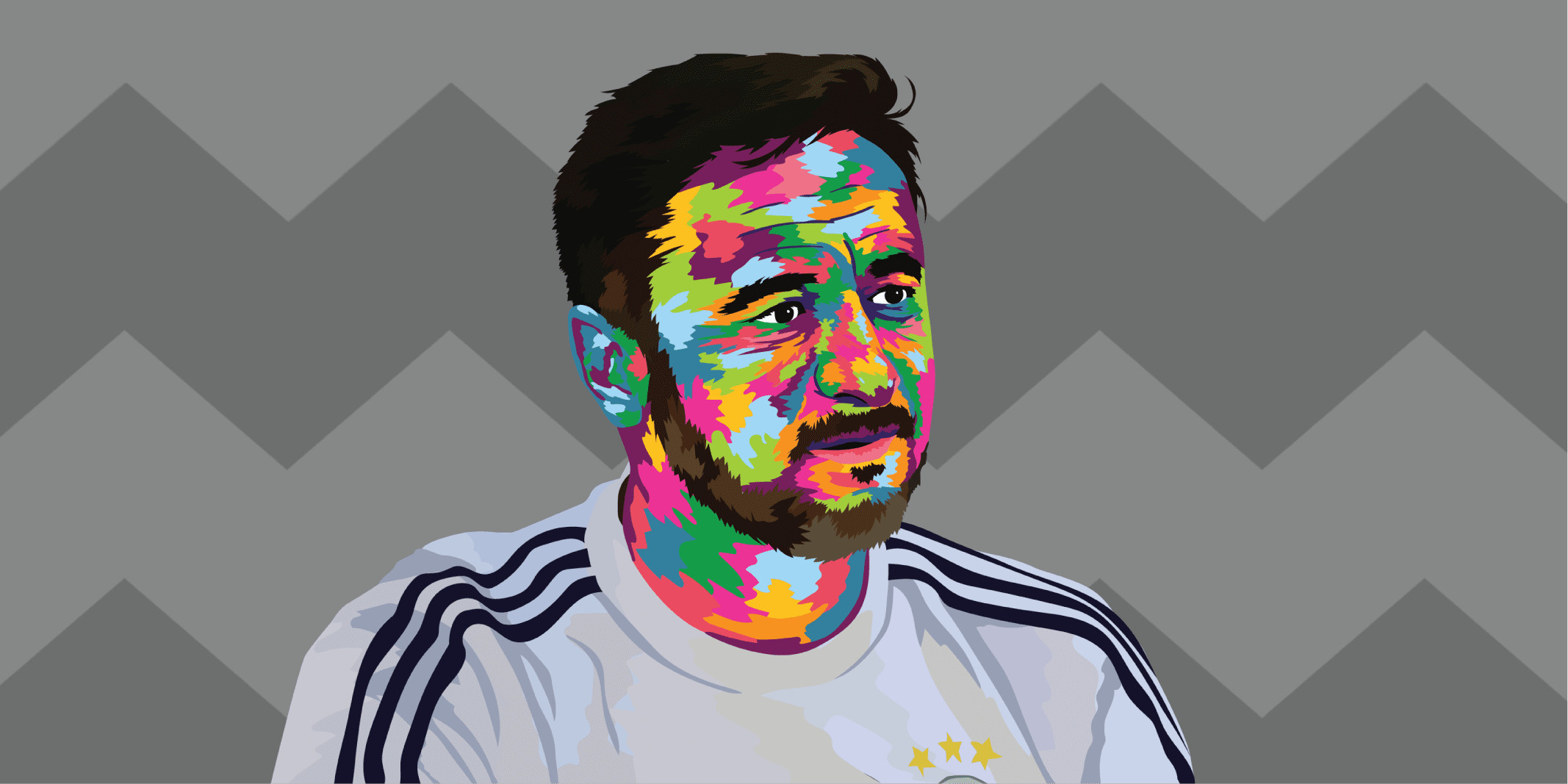




Comments